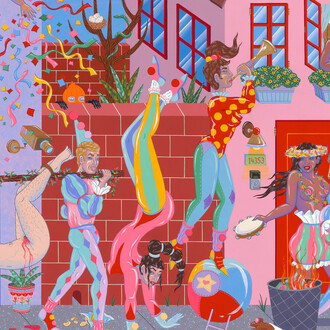Face to Face brings together contemporary portraiture from Southern California collections, in recognition of the vital role private collectors play in supporting institutions and artists from Los Angeles and beyond. This exhibition highlights in particular a new generation of collectors of color whose mission, in part, is to support artists already at the early stages of their career, often ahead of the mainstream. Recognizing the important role these collectors play in helping to establish a platform for critical practices to develop and thrive, Face to Face focuses on one of the longest-standing genres of art — portraiture — in order to ask how contemporary artists, and in particular artists of the African diaspora, are revitalizing, redefining, and expanding this traditional subject matter across media.
Portraiture is a means to depict someone’s physical appearance, but it can offer insights beyond the facts of a subject’s visage, body, and clothing, prompting fundamental questions of self-determination and illuminating myriad ways of being and being seen in the world. Contemporary artists globally are redressing the historic omission of black figures from this genre; their complex and multivalent images centralize these subjects, while denying any sense of a fixed or monolithic identity. The earliest work in this exhibition is Lyle Ashton Harris’s ironically titled black-and-white photograph, Miss America (1987–88), which depicts a woman sitting for a formal studio portrait wearing white face and draped in an American flag. The photograph establishes many of the key tenets that the artists on view here have continued to explore over the past thirty years, using the human figure to trenchantly address questions of identity, belonging, performance, and representation. Like Harris, many artists use images of individuals to symbolically examine the convergence of the self with larger cultural, political, and historical spheres.
These images employ representations of individuals to reflect and interrogate questions of class, style, gender, emotion, and many other facets of the human condition. Face to Face is organized around the ways in which artists have interpreted and used portraiture, exploring the interplay between themes of self-presentation, performance, love and desire, iconography, and resistance and commemoration. Taken together, these works on loan from local collections offer an opportunity to both connect and look inward, expressing the breadth of how we see one another and how we see ourselves.
















